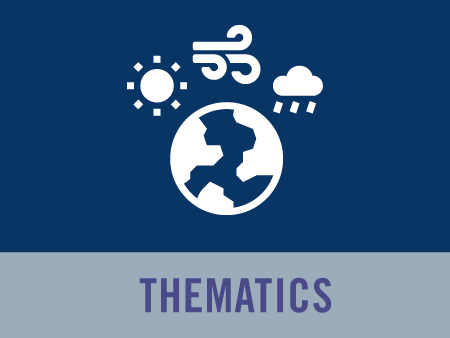Medspiration project background
The Medspiration Project is a European initiative to combine data measured independently by several different satellite systems into a set of data products that represent the best measure of SST, presented in a form that can be assimilated into ocean forecasting models.
Sea Surface Temperature
The temperature at the surface of the ocean is an important physical property that can be measured quite easily from Earth Observation satellites. SST has a strong influence on the exchange of heat, momentum, water and gases beteen the ocean and the atmosphere. Knowledge of the geographical distribution of SST and its variation with time is therefore essential for predicting the dynamical behaviour of the atmosphere and the ocean. SST is also an important indicator of climate and climate change, giving us a finger on the pulse of the planet itself.
The large volume of data acquired from twenty years of satellite observations of SST has given scientists a uniquely detailed view of the changing physical characteristics of the surface of the oceans, sampled at a rate impossible to achieve with only ship based observations. Today the entire planet is observed at least once a day by various satellite sensors. Demands are increasing to frequently update measurements of SST for use in near-real time to drive ocean foreacsting models, and for numerical weather prediction. At the same time the use of SST as a measure of climate change requires measurements of high accuracy.
Medspiration project
Medspiration is a project funded by ESA to produce a robust and reliable set of SST data by combining the best outputs from several independent SST missions. Its underlying objective is to prepare satellite-derived SST data in a form which facilitates timely assimilation into numerical ocean forecasting models. At the same time it aims at producing a "best" merged SST data product for general use.
Ocean forecasting models
While the use of numerical weather forecasting models is well established in meteorology, the use of numerical models of the ocean has only recently begun to make an impact on those with operational responsibility for monitoring or forecasting the ocean and managing the marine environment. Improvements in the capabilities of ocean models, coupled with the availability of satellite measurements of sea surface temperature, sea surface height and other ocean parameters, has led to the emergence of the concept of ocean forecasting systems. This is the scenario where numerical ocean models with inputs from observations in near-real time are used to represent the present state of the ocean.
Observational data needed
The description of the model ocean is regularly updated by comparing its predictions with actual observations of the ocean, and making appropriate adjustments to keep it as close as possible to the way the real ocean is seen to evolve.If the output data from such systems are to be used for credible operational tasks, such as providing forecasts of sea state and currents, for monitoring algal blooms or marine pollution, and predicting the fate of oil spills, it is essential to have as much coupling as possible beteween observations and the numerical model. Satellites are very effective in providing a wide synoptic view of an ocean parameter that is suitable for assimilation into the model. SST has a key role to play here.
Inadequacy of existing SST data
There are presently several independent representations of SST being produced from different satellite systems by a number of agencies. Discrepancies between them can confuse the assimilation process into the model. Individually none of them is as good as the models require. GODAE has identified that numerical ocean forecasting models need a near-real time supply of SST data, sampled often enough to resolve the diurnal cycle, with an accuracy better than 0.2 K, and a spatial resolution better than 10 km. To achieve this combination of temporal, spatial and radiometric resolution is possible only by combining the best capabilities of different types of sensors.
GHRSST
Satellite oceanographers have responded to this challenge to produce a new SST product drawing on the best characteristics of several different systems, by setting up GHRSST. This project aims to combine all the available SST data from across the globe to form a high resolution, high accuracy and high availability SST product for the new century.
Data assembly Centres
GHRSST-PP is organised as a partnership between regional groups responsible for generating SST products, to a common GHRSST specification. Several such regional data assembly centres (RDACs) exists hroughout the world. Their primary task is to collate all level 2 satellite SST measurements within their region or for their sensors, perform quality assessment and reissue the data in a common format, including a measure of the quality of every measurement, suitable for model assimilation. These are called GHRSST L2P data. They also pair in situ measurements of SST with corresponding satellite data to produce a match-up database (GHRSST MDB).One or more global data assembly centres (GDACs) then use the output from the RDACs to produce global analysed SST products (called GHRSST L4 data), using well defined procedures to harmonise the discrepancies between SSTs from different types of sensor, and to fill sampling gaps.
Medspiration..
..has been created by ESA to serve as a European RDAC for GHRSST-PP, generating L2P and MDB products for the Atlantic Ocean and its adjoining seas. It also assemble diagnostic datasets (GHRSST HR-DDS) in which all available L2P and L4 data for a number of select small areas are assembled together and resampled onto a common grid to assist intercomparison and characterisation of the different input data sources. Additionally Medspiration have the task of producing an ultra-high resolution (2km) analysed SST product for the Mediterranean Sea.










